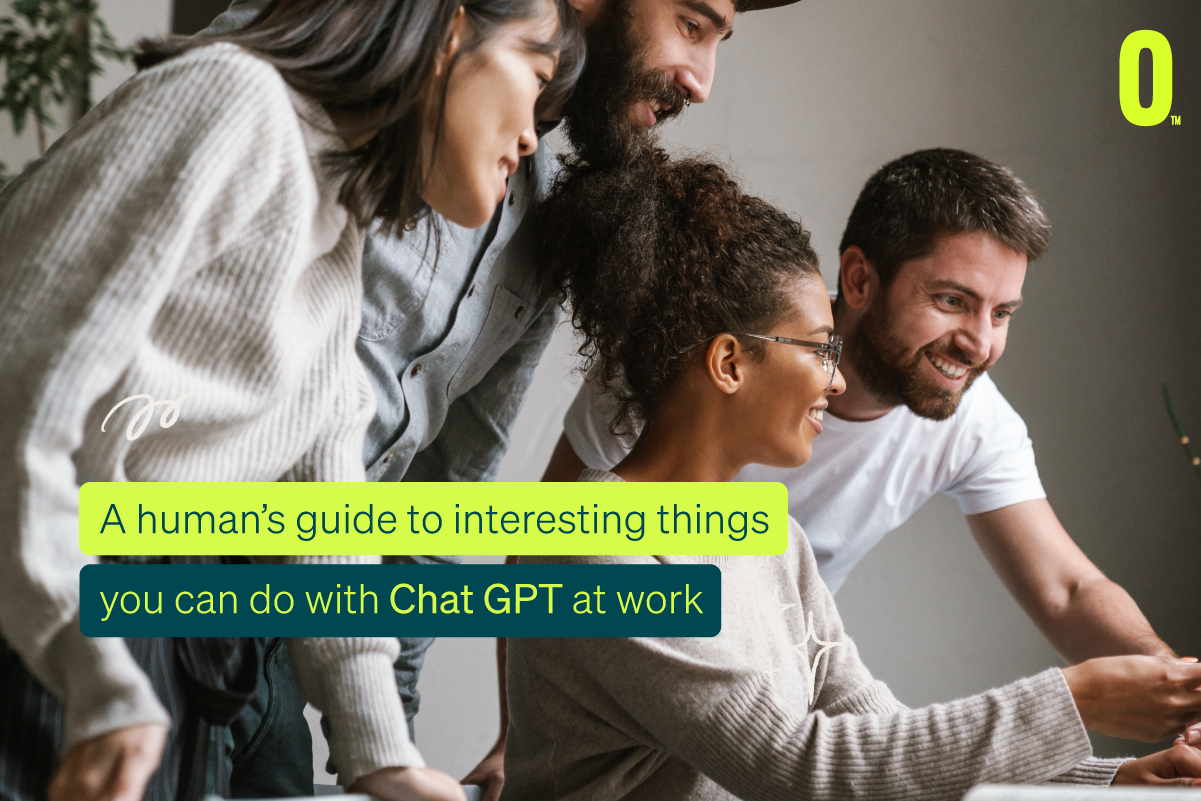While AI tools have come a long way in recent years and can perform a wide range of tasks autonomously, they still need a human touch to truly reach their full potential. This is because AI tools are only as good as the data they are trained on, and it takes human input to ensure that the data is relevant, accurate, and unbiased. After all, Chat GPT and other AI tools crawl the internet for their data – and the internet has everything from peer reviewed scientific journals and expert articles to fake news and your elderly uncle’s social media opinions, and these tools can’t really tell the difference!
Additionally, AI tools often struggle with tasks that require human-level empathy or creativity, such as customer service or content creation. A human touch is also necessary to interpret the output of AI tools, as they can sometimes generate incorrect or irrelevant responses.
Finally, humans are responsible for setting ethical and legal boundaries for AI tools, ensuring that they are being used responsibly and not causing harm.
In short, while AI tools are powerful and can automate many tasks, they are not a replacement for human input, creativity, and critical thinking!
1. Business research and writing
This is a great tool for generating a foundation or structure for writing emails, reports, or other business documents. By providing a prompt or a topic, Chat GPT can generate ideas, sentences, or even entire paragraphs to include in your work.
To use Chat GPT for business report writing, you can input data and information relevant to your report, such as financial data, market research, or customer feedback, and the system will analyse it and generate a summary or report that presents the key findings and insights. Additionally, Chat GPT can be used to proofread and edit existing reports, identifying errors and inconsistencies in language and style.
By using Chat GPT for business report writing, you can save time and resources by automating the process of report writing, improving the accuracy and clarity of your reports, and reducing the risk of errors and inconsistencies. However, it is important to note that Chat GPT-generated reports should be reviewed and edited by a human writer to ensure accuracy and completeness, and to add any additional insights, tone, context, or analysis as needed!
2. Customer service
Using this AI tool, you can generate generic responses for customer service inquiries, keeping your service running 24/7. To start, input a database of common customer inquiries and issues, along with their corresponding answers and solutions. Chat GPT can then be integrated into your customer service channels, such as chatbots, email, or social media, to provide quick and accurate responses to customer inquiries and issues.
Additionally, Chat GPT can be used to identify patterns and trends in customer inquiries and issues, helping you to identify areas for improvement in your customer service processes. By using Chat GPT for customer service, you can improve the speed and accuracy of your customer service responses, reduce wait times and customer frustration, and free up your customer service agents to focus on more complex issues that require human intervention.
However, it is important to note that Chat GPT may not always be able to handle complex issues or provide the level of empathy and understanding that some customers may require, so it is important to have a human customer service team available to handle these cases.
3. Quality assurance
One way to use Chat GPT for quality assurance is to train it to recognise common errors or issues in customer support responses, marketing messages, or product descriptions. You can input a series of correct and incorrect examples of these documents, and Chat GPT will learn to identify common mistakes and inconsistencies. Once trained, you can use Chat GPT to check the quality of new documents by inputting them into the system and seeing if Chat GPT identifies any issues.
Again, this is very useful for routine issues, and human intervention is still exceptionally important to maintain accuracy, oversee the program, and manage more complex issues.
4. Human resources
Businesses can use Chat GPT to generate job descriptions or to screen resumes. It can also be used to provide onboarding assistance or answer common employee questions as it will generate generic answers for FAQs. You can automate HR support by having the tool answer common inquiries, such as vacation requests, employee benefits, or onboarding procedures.
Another good idea is to input a series of questions and answers to common inquiries, and the system will learn to recognise and respond to similar inquiries in the future. This can help free up HR staff from responding to repetitive inquiries, allowing them to focus on more complex issues. Additionally, Chat GPT can be used to automate onboarding procedures by providing new hires with information about the company culture, policies, and benefits. This can help new employees get up to speed quickly and feel more comfortable in their new role.
5. Sales
By inputting a prompt or a question, Chat GPT can generate potential customer objections and responses. This can help sales teams prepare for potential issues and assist that way to close more deals. You can also input your ideal customer profile, and the system will generate questions to qualify leads and collect information about their needs and preferences.
Based on this information, Chat GPT can suggest personalised product recommendations or send targeted marketing messages to nurture leads and move them down the sales funnel.
6. Training
To use Chat GPT for employee training, you can input the training content into the system, and it will generate interactive modules that employees can use to learn about new products, services, or procedures. Chat GPT can also create quizzes and assessments to test employees’ knowledge and provide feedback to ensure they understand the training material.
Additionally, Chat GPT can be used to create personalised training modules tailored to individual employees’ needs based on their performance in previous assessments or job functions. This can help increase employee engagement and knowledge retention, ultimately leading to improved job performance.
7. Decision-making
Chat GPT can provide potential solutions or suggestions for a problem, although these may be generic answers. However, this is useful for providing a foundation or structure for your solution,which can help businesses make informed decisions based on data-driven insights. You can input data relevant to your decision, such as market trends, customer behaviour, or financial data, and the system will analyse it and provide insights and recommendations.
Additionally, Chat GPT can be used to make predictions about future outcomes, such as sales forecasts or market trends, based on past data and machine learning algorithms. By leveraging the power of Chat GPT for decision-making, you can make more informed and data-driven decisions, leading to better outcomes and improved business performance. However, it must be emphasised that this delivers raw insight that must be evaluated and filled out by human expertise!
8. Data analysis
This tool crawls the internet and has access to massive amounts of data, so it can be useful for generating insights or correlations. Start by inputting a large dataset, and the system will analyse it and identify patterns, correlations, and trends that may not be immediately apparent.
By leveraging machine learning algorithms, Chat GPT can learn from past data and make predictions about future trends or outcomes. Additionally, Chat GPT can be used to automate data entry and cleaning tasks, saving time, and reducing errors.
By using Chat GPT for data analysis, you can gain insights into your business operations, customer behaviour, and market trends that can inform decision-making and drive business growth.
9. Translation
Foreign language? No problem!To use Chat GPT for translation, you can input the text to be translated, select the source and target languages, and the system will generate a translated version.
Chat GPT can also be used to detect and translate idiomatic expressions, colloquialisms, and slang, which can be difficult for human translators. Additionally, Chat GPT can learn from previous translations, improving its accuracy and efficiency over time. By using Chat GPT for translation, you can communicate effectively with clients, colleagues, and customers in different languages, opening new business opportunities and improving communication across borders.
However, it is important to note that Chat GPT may not always be 100% accurate, especially for complex texts, and it is recommended to have a human translator review and edit the translation for accuracy, tone, and context!
Otto – Managed IT services for human-driven businesses
The best thing about us is that we are a people-first tech company. That means we work with you and your teams to get solutions and services up and running that they’ll love. It also means that we work hard to make sure our tech specialists are as happy as our clients are and that we support their well-being the same way we support your values and goals.
Chat with us today about no-BS tech solutions and managed IT services that get the job done right!



